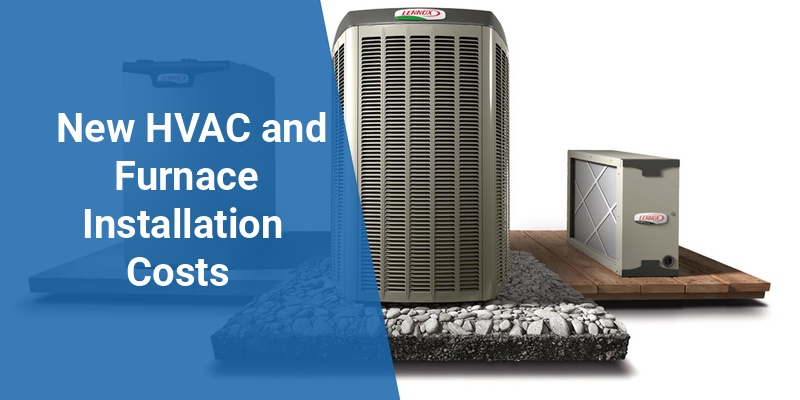Installing a new HVAC system or furnace is a significant investment that impacts home comfort and energy efficiency. Understanding the cost factors, installation expenses, and available options helps homeowners make informed choices suitable for their budget and needs. This guide covers average costs, factors influencing pricing, and tips for selecting the right system to ensure reliable heating and cooling year-round.
| Type | Average Cost Range | Installation Time | Lifespan (Years) |
|---|---|---|---|
| Furnace (Gas) | $2,500 – $6,000 | 1 to 3 days | 15 to 20 |
| Furnace (Electric) | $1,500 – $4,000 | 1 to 2 days | 20 to 30 |
| Central Air Conditioner | $3,000 – $7,000 | 1 to 3 days | 12 to 15 |
| Heat Pump (HVAC) | $4,000 – $8,000 | 2 to 4 days | 10 to 15 |
Factors Influencing HVAC and Furnace Installation Costs
The cost to install a new HVAC system or furnace can vary widely based on several key factors. Location, system size, efficiency rating, and labor costs are primary contributors to the overall price. Additionally, home-specific requirements such as ductwork, fuel type, and complexity of installation can add significant costs.
System Type and Size
The choice between gas furnaces, electric furnaces, heat pumps, and central air conditioners directly affects pricing. Larger homes require systems with higher capacity, increasing both equipment and installation costs. For example, a high-efficiency gas furnace sized for a 3,000 square foot home will be more expensive than a smaller unit designed for 1,000 square feet.
Efficiency Ratings
Energy efficiency ratings such as SEER (Seasonal Energy Efficiency Ratio) for air conditioners and AFUE (Annual Fuel Utilization Efficiency) for furnaces influence initial costs. Higher-efficiency models tend to cost more upfront but deliver lower energy bills. Homeowners should assess long-term savings versus initial investment when selecting equipment.
Labor and Installation Complexity
Professional labor rates vary by region, with urban areas typically charging more. The complexity of installation, including modifications to ductwork, ventilation, electrical upgrades, or gas line installations, can significantly increase labor costs. A thorough home assessment is critical to accurately estimate expenses.
Average Costs for New Furnace Installation
Furnace installation costs depend on the fuel type and system efficiency. Below are typical price ranges for the U.S. market:
| Furnace Type | Equipment Cost | Installation Cost | Total Estimated Cost |
|---|---|---|---|
| Gas Furnace (Standard Efficiency) | $1,200 – $2,500 | $1,000 – $2,000 | $2,200 – $4,500 |
| Gas Furnace (High Efficiency 90%+ AFUE) | $2,000 – $3,500 | $1,200 – $2,500 | $3,200 – $6,000 |
| Electric Furnace | $700 – $1,500 | $800 – $2,000 | $1,500 – $3,500 |
Additional costs may include new thermostat installation, removal and disposal of the old furnace, and permits if required by local municipalities.
Call 888-906-9139 for Free Local HVAC Quotes – No Obligation, Just Savings!
New HVAC System Installation Costs Explained
An HVAC system integrates heating, ventilation, and air conditioning to maintain a comfortable indoor environment. The cost of a new HVAC system depends on equipment type, capacity, and installation requirements.
Central Air Conditioning Units
Central air conditioners typically cost $3,000 to $7,000 installed, depending on capacity (measured in tons) and energy efficiency. Homes without existing ductwork will incur extra expenses for installing new duct systems.
Heat Pumps
Heat pumps are versatile systems providing both heating and cooling. Installation costs range from $4,000 to $8,000. They are popular in moderate climates and offer excellent energy efficiency, but performance can vary in colder regions.
Combined HVAC Systems
Purchasing a combined heating and cooling system can provide better integration and potentially lower installation costs compared to separate units. Homeowners should compare lifecycle costs and system warranties when making decisions.
Additional Installation Considerations and Hidden Costs
Several factors beyond basic equipment and labor fees can affect the overall price of new HVAC or furnace installation. Understanding these helps avoid unexpected expenses.
Ductwork Repair or Installation
Existing ductwork that is old, leaky, or inadequate may require repair or replacement. New duct installation can cost between $1,000 to $5,000 depending on home size and complexity.
Permits and Inspections
Many local governments require permits for HVAC or furnace installation. Permit fees usually range from $50 to $500, and inspections ensure compliance with building codes and safety standards.
Call 888-906-9139 for Free Local HVAC Quotes – No Obligation, Just Savings!
Upgrades and Modifications
Upgrading electrical panels, adding ventilation, or installing zoned HVAC controls increases installation costs. Such upgrades improve system performance but should be included in the initial budget.
Tips for Saving on New HVAC and Furnace Installation
- Get Multiple Quotes: Obtain at least three estimates from licensed contractors to compare pricing and services.
- Consider Energy Efficiency: Higher-efficiency units may cost more upfront but reduce utility bills long-term.
- Schedule Installation During Off-Peak Seasons: Late fall or early spring installations often have lower labor rates due to less demand.
- Look for Rebates and Incentives: Check federal, state, and local programs offering rebates for energy-efficient systems.
- Maintain Your System: Regular maintenance extends the life of HVAC equipment and improves efficiency.
Choosing the Right HVAC Professional for Installation
Selecting a qualified HVAC contractor is crucial to ensure safe and efficient installation. Homeowners should verify licensing, insurance, and localized experience. Reviews and referrals also offer insight into workmanship quality.
| Criteria | Importance |
|---|---|
| License and Certification | Essential for legal and safety compliance |
| Experience and Reputation | Indicates quality and reliability |
| Written Estimates | Prevents unexpected costs |
| Warranty and Guarantees | Protects against future repair expenses |
| After-Sales Support | Important for maintenance and troubleshooting |
Ensuring transparent communication and clear contracts will help avoid misunderstandings and guarantee the installation meets expectations.
